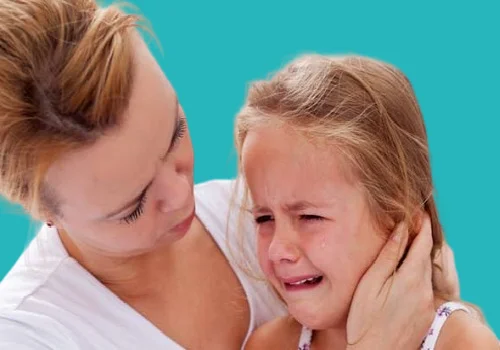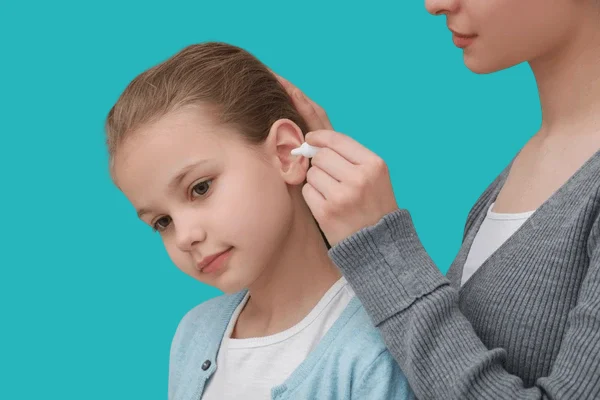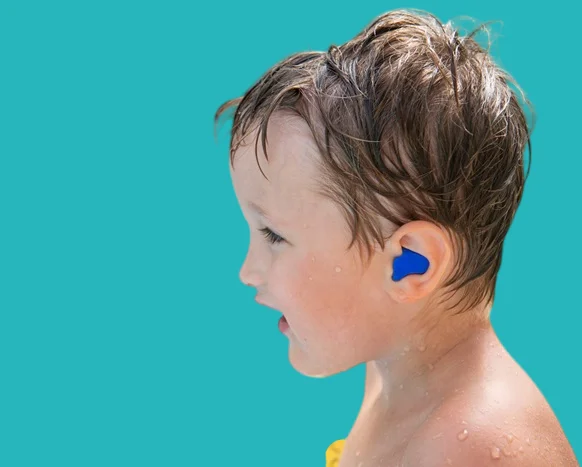Ear pain in children is a common concern for parents, affecting many young children who may not be able to describe the pain.
Ear pain often stems from several causes, including simple infections or earwax buildup, requiring immediate treatment to alleviate the pain. This article will discuss the symptoms and treatment methods for ear pain in children.
What is ear pain in children
Ear pain in children is a sensation of pressure or pain inside the ear. This pain may affect one or both ears, impacting the child's life and comfort.
Causes of ear pain in children
Ear pain in children can be caused by several factors, including:
- Earwax buildup.
- Sinusitis.
- Outer ear infection.
- Middle ear infection.
- Sore throat.
- Fluid buildup behind the eardrum.
- Changes in air pressure during flight.
Earache Symptoms in Children

The symptoms a child may experience vary depending on the cause of the pain, the severity of the injury, and the child's age. These symptoms include:
- Excessive crying.
- Fever.
- Restlessness and difficulty sleeping.
- Ear drainage.
- Refusal to eat or breastfeed.
- Constant ear pulling and scratching.
- Unresponsiveness to low sounds.
- Imbalance while walking and moving.
How is earache diagnosed in children
Diagnosis depends on the doctor examining the child's ear, checking the eardrum, and determining if there is any inflammation. The doctor will also ask the parents about any other symptoms.
However, the doctor may request additional tests, such as a hearing test and measuring ear pressure, to determine the underlying cause of the pain and prescribe the appropriate treatment.
Treatment Methods for Earache in Children

- There are several ways to treat earache in children, depending on the cause and severity of the symptoms. These include:
- Ear drops.
- Elevating the head during sleep.
- Ear irrigation to remove wax.
- Pain relievers and antibiotics may be prescribed.
Medications for earache in children
Some pain relievers or antibiotics may be given to treat earaches in children, but these should be used under the supervision of a doctor or pharmacist. Examples include:
- Cetyl syrup.
- Panadol syrup.
- Ibuprofen syrup.
- Autocept ear drops.
- Augmentin syrup.
Home remedies for earache in children
Earache in children can be relieved with simple and safe home remedies, but these do not replace consulting a doctor. These remedies include:
- Avoiding water from entering the ear.
- Applying warm compresses to the ear.
- Chewing gum to relieve pressure inside the ear.
- Elevating the head above the level of the body while sleeping.
- Not inserting any cotton swabs or foreign objects into the ear.
Ways to prevent earaches in children

There are ways to prevent and protect children from earaches, regardless of the cause:
- Elevating the baby's head during feeding.
- Using earplugs while swimming.
- Not cleaning the child's ears with cotton swabs.
- Make sure your child is up-to-date on all vaccinations.
- Avoid exposing your child to secondhand smoke.
- Consult your doctor regularly if your child is swimming.
Frequently Asked Questions
How long does ear pain last in children
Ear pain can last from 2 to 14 days, depending on the cause and the duration of treatment.
What causes sudden ear pain in children
Sudden ear pain in children can be caused by a middle ear infection or a buildup of fluid and wax inside the ear.
How do I know if my child has an ear infection
If your child shows symptoms such as persistent crying, difficulty sleeping, discharge from the ear with an odor, loss of appetite, and fever.
How long does an ear infection last in children
An ear infection in children can last from 3 to 10 days, depending on the cause of the infection and how quickly treatment is started.
What is the difference between an ear infection and teething
The difference between them depends on the accompanying symptoms. An ear infection causes the child to pull at their ear, with discharge and temporary hearing loss, while teething is accompanied by red gums and drooling.
Article Summary
Ear pain in children occurs for many reasons, and its symptoms are easily noticeable, such as the child crying, ear discharge, fever, and loss of appetite.
There are several effective treatment methods, including medication with painkillers or antibiotics, ear drops to remove wax (all under a doctor's supervision), or home remedies to relieve the child's pain.